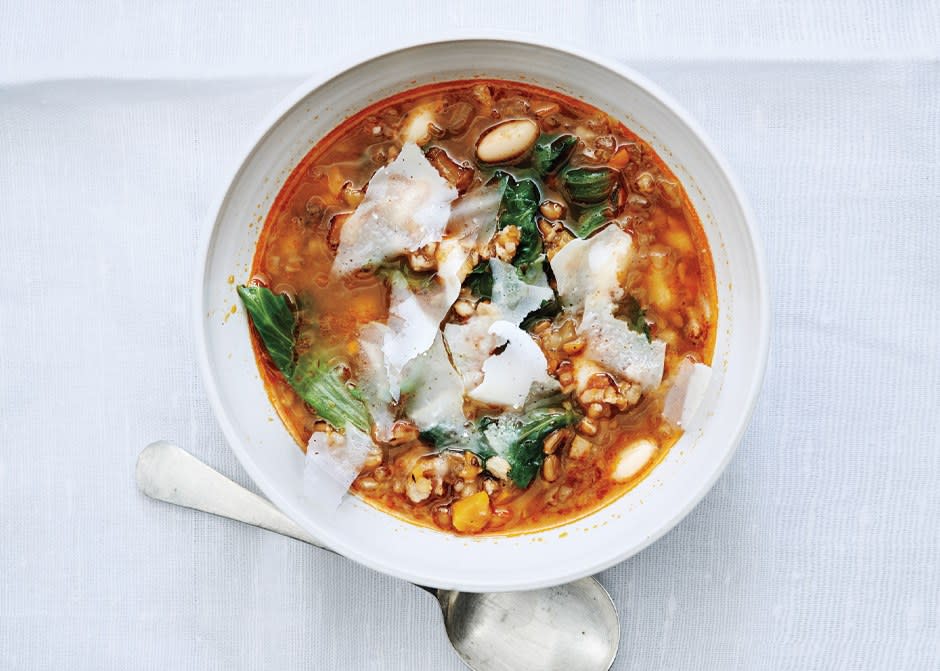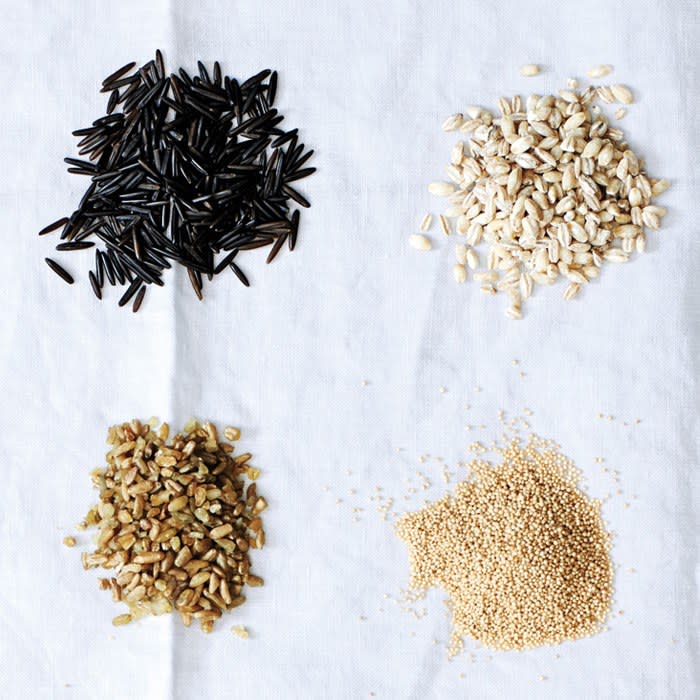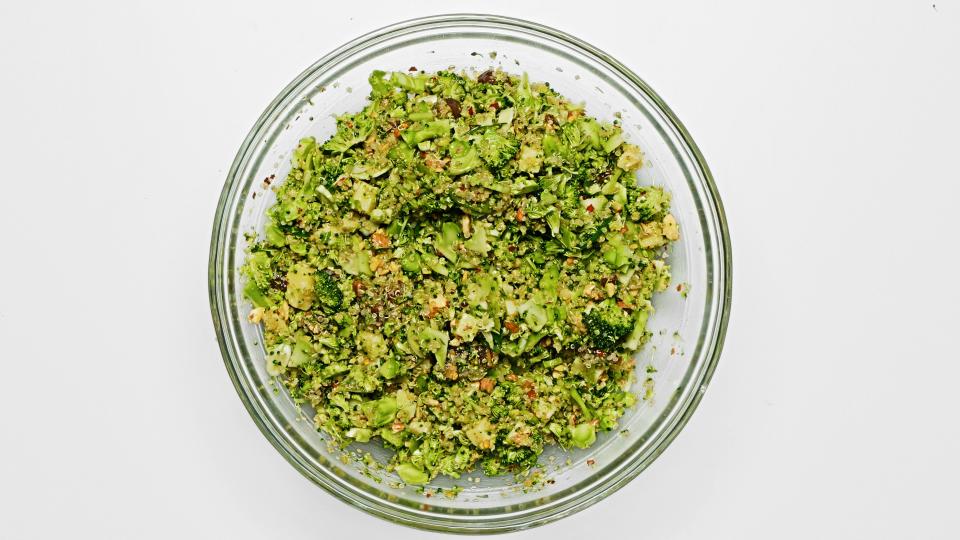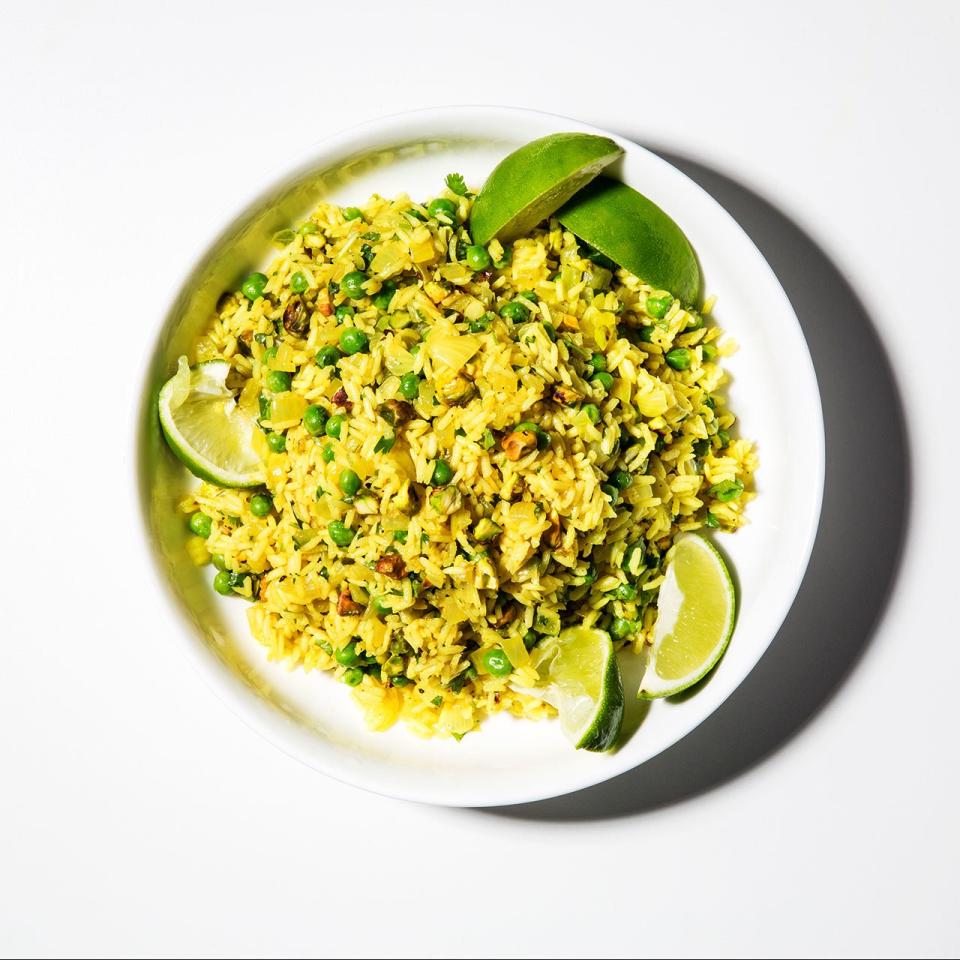How to Cook Farro (and Literally Every Other Grain) Perfectly, Every Time

Grains and grain-like seeds (lookin' at you, quinoa) are the healthy, versatile, and filling backbone of many of our home-cooked meals. In fact, we make it a point to cook hearty grains like farro and barley in big batches to use throughout the week in soups, salads, and lunchtime grain bowls. But instead of trying to remember a million different water-to-grain ratios, we rely on our favorite one-size-fits-all method for big-batch grain cooking—and so should you.
Memorize this formula, and you'll only ever be a pot of boiling water away from faster, healthier meals:
Toasted grains + a big pot of salted water + aromatics [onion/garlic/herbs] + chill time = big batch grains

toasted-spelt-soup-with-escarole-and-white-beans
Ditte IsagerToast for the Most
Toasting dry grains before cooking intensifies their flavor and adds depth to the finished dish. We especially like toasting nutty grains like quinoa, farro, wheat berries, and freekeh. You can either spread your grains on a rimmed baking sheet and toast in a 350°F oven until lightly browned (about 10 to 15 minutes), or cook them in a dry skillet over medium heat, stirring often, until they're just slightly browned and smell fragrant. Just be careful not to take your grains too far—burn them and they'll end up tasting bitter. If this step seems annoying, you can certainly skip it and everything will be just fine. (But, hey, you've gotta do something while that water comes up to a boil...)
One Pot Fits All
Treat your grains just like pasta and cook them in one big stockpot of boiling, well-salted water until al dente, tasting for doneness as you go. We prefer this method over the standard cover-and-simmer technique because the extra room in the pot lets the grains shed a lot of the starch that can otherwise lead to gumminess. This method also happens to work for everything from tiny millet to hearty barley and rice—plus, you don't have to remember a dozen different water-to-grain ratios. Keep in mind that, when you're making quick-cooking grains and seeds like amaranth or millet, the key to success is to keep an eye on the timer and check for doneness as you cook, as these can go from tender to mushy in a matter of minutes. Once your grains are cooked, drain them using a fine-mesh strainer. In theory, you can simultaneously cook different grains in a single pot, but unless you're confident that they'll all be done around the same time, stick to one type of grain per batch.

grain-index-main
Ditte IsagerAdd Some Aromatics
Your grains will soak up whatever you throw in that cooking water, so this is the time to really go for it with aromatics and woody herbs. Any mix of onion, bay, thyme, rosemary, celery, shallots, and garlic will work—just fish them out of the pot before you drain. You could cook your grains in chicken or vegetable stock if you wanted to, but, since the one-pot method requires a full stockpot's worth of liquid, we prefer to stick with water.

Chill for the Perfect Amount of Fluff
For fluffy, never-mushy grains, spread the cooked grains on a baking sheet and refrigerate them, uncovered, until they cool and dry out a bit. Why is it so important for your cooked grains to be dry, besides the fact that mushy grains are kind of gross? Well, once the outer layers are dried, they'll take on sauces better. If they're still wet, it's going to get gummy. And if you're planning to incorporate a vinaigrette or a sauce later, spread freshly cooked grains out on a parchment-lined baking sheet and refrigerate uncovered for at least 30 minutes, or until chilled, before proceeding. If you're not planning on using your chilled grains right away, store them in an airtight container in the fridge. Some for now. Some for later. Work.


